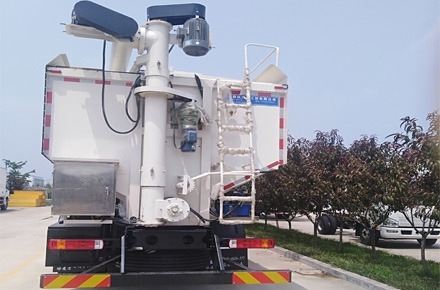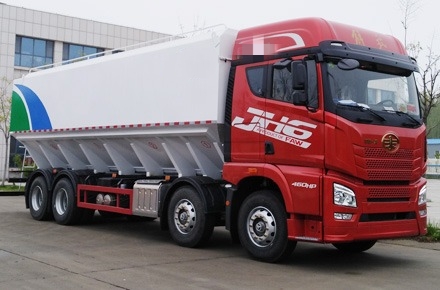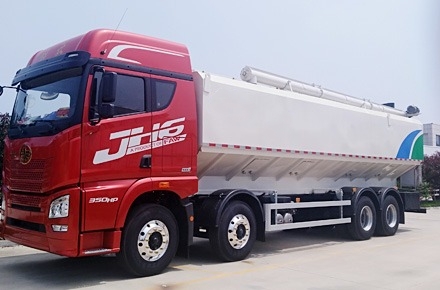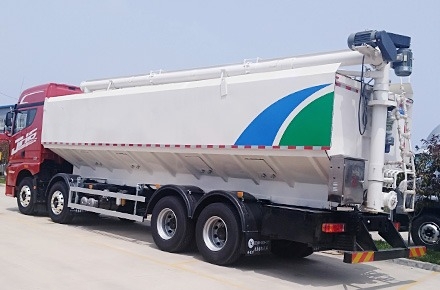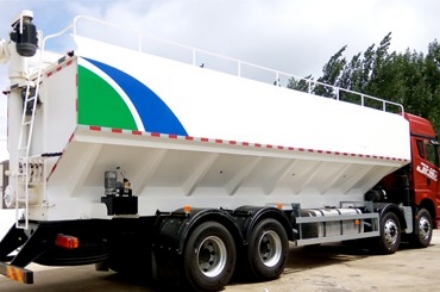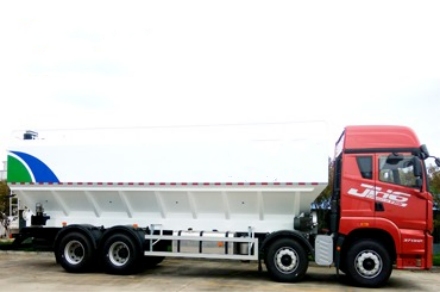Pneumatic loading is a method used to transfer dry bulk materials through pipelines using air pressure or vacuum systems. It is a widely adopted industrial process in sectors such as agriculture, food processing, chemicals, construction, and manufacturing, where efficient handling of fine powders and granular materials is essential. The term “pneumatic” itself is derived from the Greek word pneuma, meaning air, which reflects the system’s reliance on compressed air or gas as the conveying medium.
This article explores the principles, types, advantages, applications, and equipment involved in pneumatic loading systems, offering a comprehensive overview of this essential industrial process.
How Pneumatic Loading Works
Pneumatic loading systems transport materials through pipelines using differential pressure. There are 2 main methods of achieving this: Positive pressure (blowing) and Negative pressure (vacuum).
- Positive Pressure Systems: In this system, air is blown into a pipeline to push the material from a supply source (like a silo or hopper) to a destination (such as a storage bin or processing area). The system uses air compressors or blowers to generate the required pressure.
- Vacuum Systems: These systems create a vacuum to suck materials through the pipeline from the source to the receiver. They are commonly used when minimizing dust emission is important or when transporting materials over shorter distances.
In both types, materials are suspended in the airflow and carried through a closed network of pipes. The air/material mixture is then separated at the receiving end using filters or cyclones, with the air vented out and the solids collected.
Types of Pneumatic Conveying
Pneumatic loading can be further categorized based on the nature of material flow:
1. Dilute Phase Conveying
This is the most common method. Materials are suspended in the air stream and conveyed at relatively high velocities (typically 15–30 m/s). It works well for lightweight, non-abrasive materials such as flour, plastic pellets, and sugar. There are 2 main subtypes:
- Lean phase pressure conveying
- Lean phase vacuum conveying
2. Dense Phase Conveying
In dense phase systems, materials move at a slower speed (typically less than 8 m/s) in a plug or slug-like flow. It is suitable for abrasive, fragile, or heavy materials like cement, fly ash, or food powders. It uses higher pressure and lower airflow, which reduces wear on the system.
Core Components of Pneumatic Loading Systems
A pneumatic loading system consists of several key components:
- Air Supply: Includes blowers or compressors to generate the necessary air pressure.
- Feeding Device: Devices such as rotary valves, screw feeders, or venturi injectors introduce the bulk material into the conveying line.
- Piping Network: Made of steel, aluminum, or specialized plastics, it connects the source and destination points.
- Air-Material Separator: Cyclone separators, bag filters, or receiving hoppers are used to separate materials from the air at the destination.
- Control Systems: Automated PLC systems monitor and control pressure, flow rate, and safety parameters.
Advantages of Pneumatic Loading
Pneumatic loading offers numerous advantages over mechanical conveying systems like screw conveyors, belt conveyors, or bucket elevators:
1. Flexibility
Pneumatic systems can easily navigate around existing structures and reach multiple destinations using branching pipelines. This is ideal for complex layouts or multi-floor facilities.
2. Enclosed System
Since materials are conveyed within enclosed pipes, there’s minimal risk of contamination, spillage, or dust emissions, crucial for hygiene in food and pharmaceutical industries.
3. Low Maintenance
Fewer moving parts mean less mechanical wear and tear, translating to lower maintenance costs and less downtime.
4. Scalability
Systems can be designed to suit varying capacities and are easily scalable by changing blower capacity or pipe diameter.
5. Automation-Friendly
Modern pneumatic loading systems can be fully automated, improving operational efficiency and reducing labor costs.
Applications of Pneumatic Loading
Pneumatic loading finds use across a broad range of industries:
- Food and Beverage: Transporting sugar, flour, grains, coffee beans, and spices.
- Pharmaceutical: Handling powders for tablet formulation and chemical mixing.
- Chemical Industry: Conveying resins, PVC, plastic pellets, and catalyst powders.
- Cement and Construction: Moving cement, fly ash, and sand to storage silos or batching plants.
- Agriculture: Loading and unloading grain, animal feed, and seeds.
- Power Plants: Transporting fly ash and powdered coal.
Mobile pneumatic loading systems are also installed on bulk tank trucks for the road transportation of dry bulk goods like cement, lime, and flour. These trucks can self-load and discharge using onboard compressors.
Challenges and Considerations
Despite its benefits, pneumatic loading comes with certain challenges:
- Energy Consumption: Systems can consume significant power due to compressors or blowers, especially in high-capacity operations.
- Material Wear: Abrasive materials may cause erosion in pipelines and bends.
- Noise: Air blowers and material impact can be loud, requiring noise control measures.
- Product Degradation: Fragile materials can break or segregate during high-speed transport in dilute phase systems.
- System Design Complexity: Effective system design requires precise calculations of air velocity, pressure drops, and material characteristics.
Selecting the right type of system and tailoring it to specific materials and environments is crucial for optimal performance.
Innovations in Pneumatic Loading
Advances in technology are making pneumatic loading more efficient and user-friendly. Some trends include:
- Smart Sensors: For monitoring flow rates, pressure, and material levels in real-time.
- Energy Recovery Systems: Reclaiming exhaust air energy to reduce operational costs.
- Modular Design: For easy upgrades and maintenance.
- Noise Dampening Technologies: Improving workplace comfort and safety.
Conclusion
Pneumatic loading is a reliable, efficient, and clean method of conveying dry bulk materials in numerous industries. Leveraging air pressure and advanced control systems, it allows for fast and hygienic material transfer across complex plant layouts. While it requires thoughtful design and careful material matching, the long-term benefits in terms of flexibility, automation, and reduced manual handling make it a preferred choice for modern material handling operations.
Whether transporting flour to a bakery’s mixer or moving cement to a construction silo, pneumatic loading continues to play a vital role in keeping industries running smoothly.
